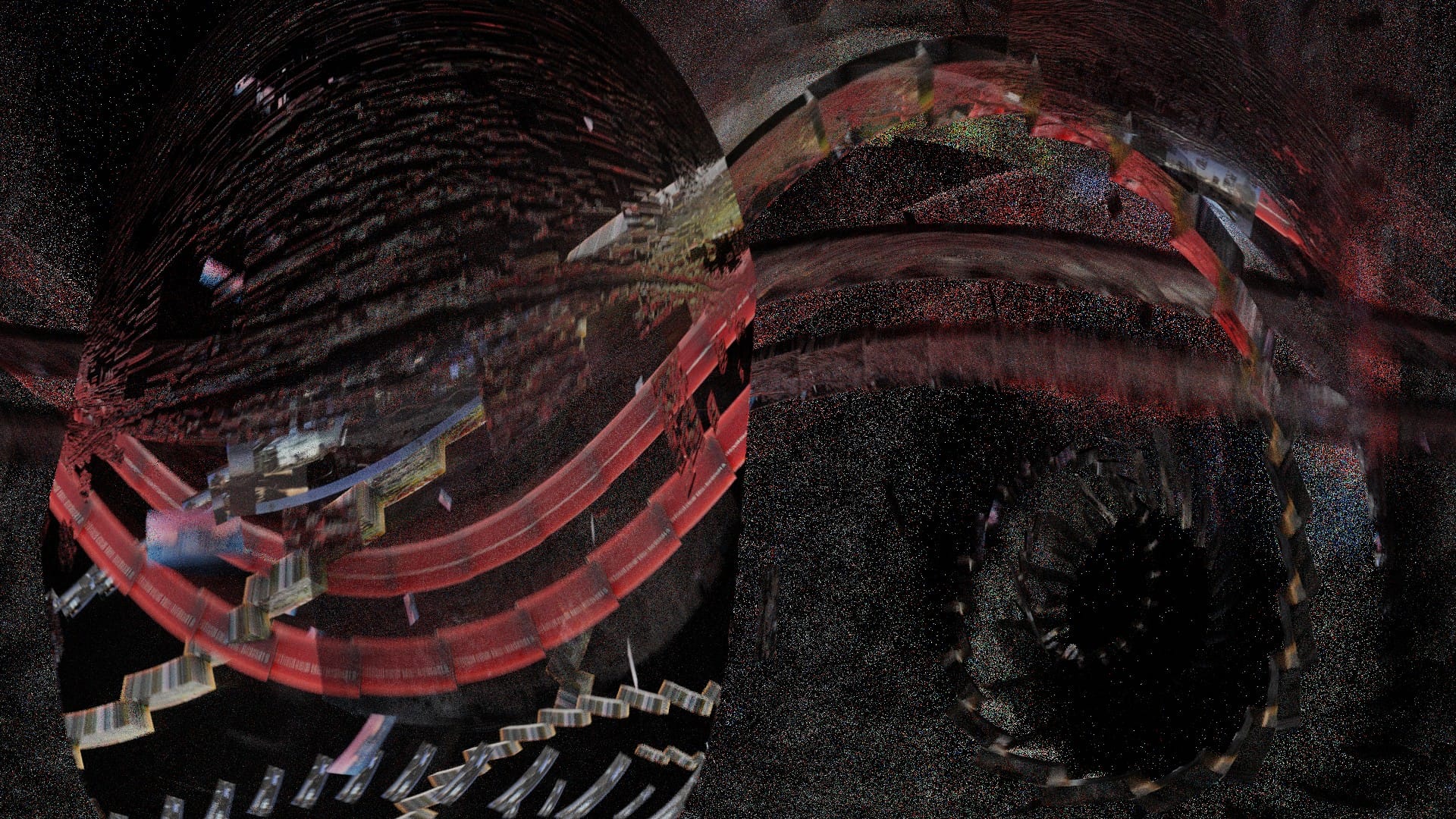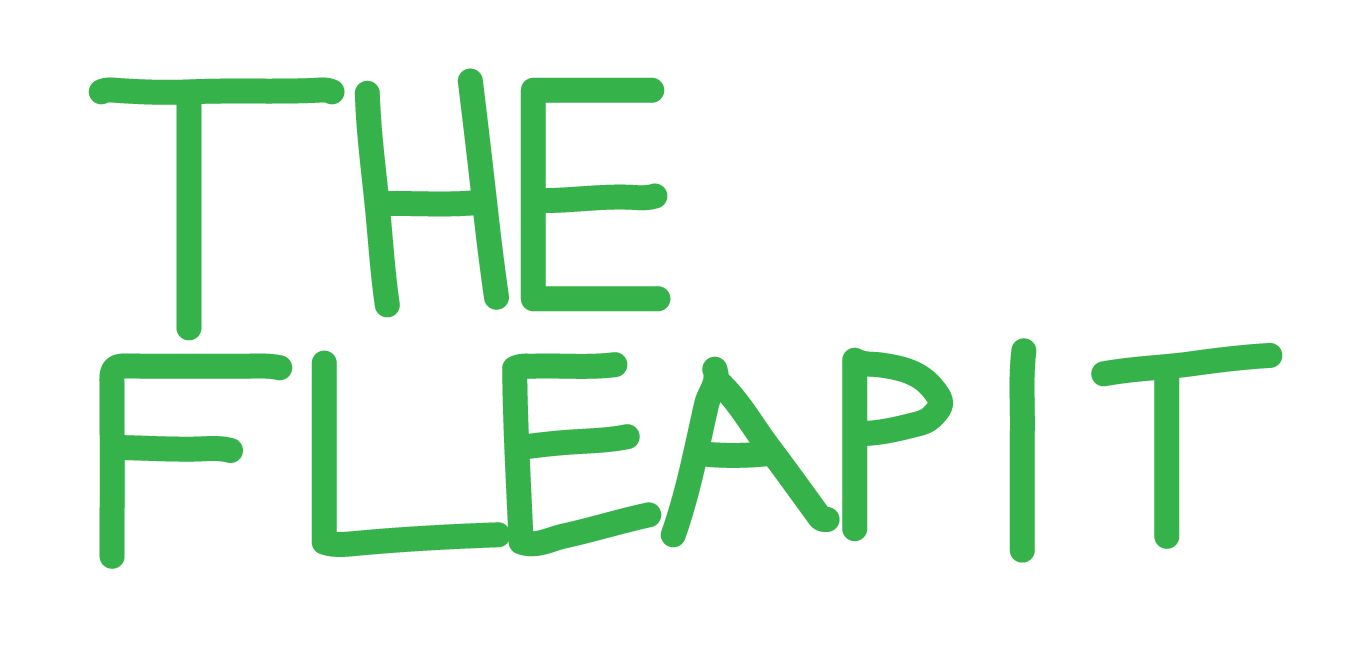No. 018 - Interview: 'Hearsay' at SOFT CENTRE
Helena Williams interviews the creative team behind 'Hearsay', performing at the SOFT CENTRE Festival.

Henry Lai-Pyne, Kirby Casilli, and Tina Stefanou are the artists behind Hearsay, an exploratory work that blends live performance with captivating visuals, challenging and redefining our idea of the cinematic experience. They will perform for one night only in Sydney this Friday at Chauvel in Paddington, as part of the PARA.cine program at the Soft Centre Festival, which also features works by the NYC-based digital performance studio Team Rolfes.
I had the chance to chat with the Hearsay team. The interview below has been edited for clarity.
On your individual approach and collaborative practice…
Henry Lai-Pyne (HLP): It’s a live cinema performance work, so the visuals support and relate to the bodies in space; they are in collaboration. I drew inspiration from the understanding that images, when projected, are material, made of light. Images, ideas and the projection of the image come from the body; it’s a matter of thought.
Tina Stefanou (TS): We all have different practices that intersect and experience with different mediums. Half of the work is trying to understand how best to collaborate with one another in this unique context. I work with animals, musicians and assemblages of people, materials and sites, that inform the films and environments I make. This work features live bodies in space; it’s performance as film. Because of the live nature of the work there will always be an element of unexplored territory and space to sculpt an experience, which I enjoy.
Kirby Casilli (KC): Usually, I depend a lot on feeling things out. Most projects I haven’t had this much designated time to prepare, and the turnaround has been much faster. In saying that, having less time means you get good at improvising. I feel with this work we’ve gone a lot harder on communication and being reference-based, with less time in the physicality of it. This work is not as improvised because there are so many layers that need to happen seamlessly: sound, live voice, live body and visuals.
On finding moments for exploration within the structure…
HLP: This work has more chapters and scenes, and we improvise within that.
KC: Yeah, we give 3-4 minutes within the structure for moments that are unexplored, and we can feed into ourselves. It’s just a tighter area.
On the intended effect on the audience…
TS: I am not thinking about prescribing a feeling that the audience needs to take home. Cinema is made with the outside gaze in mind; the audience is the other member in the collaboration. There’s no intention for them to walk away in awe, love, defiance or inspiration, if they do great, that’s a bonus. It’s more about how Hearsay can give the present moment more attention; to bring more presence between what and where we are viewing an artwork. We are amplifying the natural drama in the cinema experience. You line up and grab a ticket. You find your seat, surrounded by people. We are playing with what is already there and hidden within recognisable tropes of cinema.
HLP: Hearsay differs from cinema in that it’s viewed in a 3-dimensional space, rather than being a flat image experience. It also takes into account the space itself, what it’s like to move within that image, in essence, moving around the volume of the cinema. How the performance will manifest itself might bring up questions of what a cinema experience could be. We have explored ideas of what the individual elements are that are a part of the cinema experience, and in some moments, we have isolated and explored those.
KC: We use the parameters of cinema to create a work. You feel it in the body; our work offers more of a physical connection rather than the psychological one that accompanies traditional cinema.
On how the different spaces in Sydney and Melbourne impact the performance…
HLP: We haven’t been to Chauvel yet; it will be a surprise for all of us. To start, they have different sound systems. ACMI feels like more of a contemporary black box viewing experience, whereas Chauvel has the ornamental architecture, which will mean it’s a different performance in conjunction with that unique space.
TS: In working within limitations of space and time, the strengths are in pushing the limitations, working with impulse and quick turn arounds and sometimes that works and sometimes that doesn’t. You make, you learn.

On what the audience should prepare for or expect…
TS: How do you prepare an audience for something you’re also preparing for? That’s the question we’re asking in real time inside the work. In the intro (no spoilers), there’s a moment where both audience and performers pause to reflect on what’s about to unfold—an experiment in shared uncertainty. And when I say “the worst,” I don’t mean disaster in the Hollywood sense. I mean the precariousness of the times we’re living in. Art isn’t exempt from that fragility. In this experimental format, we’re not aiming for a polished, seamless, high-resolution rendering of a reality that doesn’t exist. What we’re offering is something closer to the unstable and at times also humorous worlds we inhabit and in this there is so much “cinematic” potential.
On the elements of live performance and their inability to be repeated (unlike traditional cinema, which can be replayed) …
TS: I believe the tension is between the reproduced image/sound and the improvised live nature of voice and sound in the work, that which cannot be replayed or repeated, changing across the performances I think this makes the work strong and exciting.
On “successful” experimental cinema…
TS: Cinema is a seductive tool—one that has profoundly shaped culture, for better or worse. In our work, we approached cinema as a kind of plaything: the cinematic experience itself as a site for experimentation. In an age of streaming platforms and solitary film-viewing, this felt like an opportunity to return to cinema as collective hallucination, as a temporal contract between audience and space.
There is also a thread between cinema and the zoo—parallel architectures of spectacle where humans gather to watch. Historically, animals and cinema have been intertwined—Muybridge’s horses being an early example. Both the zoo and the cinema are stages for the display of humans, animals, and more-than-human assemblages. In Hearsay, we worked with costume, instruments, sound, people, chorus, and space to amplify and complicate these connections. I also see the work as successful in forging another link: between voice, the physiology of the larynx, and the archive. I call this “larynx cinema.” Henry has found a way to render these elements together in a fleshy, visual, animated form—where the ACMI archive, through voice and image merge into a cinematic creature. Kirby brought cinematic pathos through the live body as emotional clay. We treated gesture itself as a cinematic device—costume, light and movement structuring image. The live chorus invokes ancient mechanisms, surfacing the unspoken and amplifying what resists a clear representation. A type of psychological scaffolding in the work. Altogether, we are building a language full of awkwardness, prolonged silences, at times defeat, flaws, and misreadings. For me, that is a successful experiment.
The show will start at 7 pm, with Hearsay on second, following Team Rolfes. This unique performance is not one to be missed! More details can be found here.
Fleapit Pick of the Week
This Friday is Wear It Purple Day and a great way to show your support for the Queer+ Community is by buying a ticket for Lesbian Space Princess, a very queer Australian animated film. It even won the Teddy Award at the Berlin International Film Festival earlier this year!
Screenings: Thursday 28 AUGUST - Wednesday 03 SEPTEMBER
Cinema Astragale
Hyenas (Djibril Diop Mambéty, 1992)
Thursday
Kino Sydney
Ace Parramatta
Wednesday
Miya Miya Film Club
A Fairuz Retrospective Pt. 2 (SOLD OUT)
Friday
Croatian Film Festival
Dražen (Danilo Šerbedžija and Ljubo Zdjelarević, 2024)
Opening Night
Wednesday
Hayden Orpheum | selected highlights
Kiki's Delivery Service (Hayao Miyazaki, 1989)
Thursday
Jaws (Steven Spielberg, 1975)
50th Anniversary
Friday, Saturday & Sunday
Total Recall (Paul Verhoeven, 1990)
35th Anniversary
Saturday
My Beautiful Laundrette (Stephen Frears, 1985)
40th Anniversary
Sunday
Golden Age Cinema | selected highlights
Roman Holiday (William Wyler, 1953)
Saturday
Muriel's Wedding (P.J. Hogan, 1994)
Sunday
The Extraordinary Miss Flower (Iain Forsyth & Jane Pollard, 2024)
Sunday
Chopper (Andrew Dominik, 2000)
25th Anniversary
Monday
Ritz Cinemas, Randwick | selected highlights
Lesbian Space Princess (Emma Hough Hobbs & Leela Varghese, 2025)
Wear it Purple Preview
Friday
Kangaroo Island (Timothy David Piper, 2025)
Daily
The Toxic Avenger (Macon Blair, 2023)
Daily
Together (Michael Shanks, 2025)
Thursday, Friday, Monday, Tuesday & Wednesday
Burden of Dreams (Les Blank, 1982)
Thursday, Saturday, Sunday & Monday
Jaws (Steven Spielberg, 1975)
50th Anniversary
Thursday, Friday, Saturday & Sunday
Robert Altman Retrospective (link)
Short Cuts (Robert Altman, 1993)
Thursday
Cult Classics (link)
To Live and Die in LA (William Friedkin, 1985)
Saturday & Monday
Celluloid Film (link)
In the Mood for Love (Wong Kar-Wai, 2000)
Friday
Classic Matinees (link)
Bicycle Thieves (Vittorio Di Sica, 1948)
Saturday & Monday
Make It Musical (link)
Evita (Alan Parker, 1996)
Sunday & Wednesday
Meet Cute (link)
The Princess Diaries (Garry Marshall, 2001)
Tuesday
Dendy Newtown | selected highlights
Together (Michael Shanks, 2025)
Daily
The Toxic Avenger (Macon Blair, 2023)
Daily
Lesbian Space Princess (Emma Hough Hobbs & Leela Varghese, 2025)
Wear it Purple Preview
Friday
Jaws (Steven Spielberg, 1975)
50th Anniversary
Thursday, Saturday, Sunday, Monday & Tuesday
Cells Out (link)
Twelves Monkey (Terry Gilliam, 1995)
Thursday
The Director's Cut (link)
Midsommar (Ari Aster, 2019)
Friday
Night Shift (link)
Medium Cool (Haskell Wexler, 1969)
Daily
Palace Cinemas | selected highlights
Sorry, Baby (Eva Victor, 2025)
Movie Club Preview
Tuesday
NYTimes Top 10 Films of the 21st Century (link)
Mulholland Drive (David Lynch, 2001)
Saturday
Parasite (Bong Joon Ho, 2019)
Sunday
Cult Vault (link)
The Sacrifice (Andrei Tarkovsky, 1986)
Monday
Matinee Memories (link)
Lust for Life (Vincenti Minnelli, 1956)
Saturday
Art Gallery of NSW
The Umbrellas of Cherbourg (Jacques Demy, 1964)
Sunday
Le Bonheur (Agnes Varda, 1965)
Wednesday
Sydney Opera House
Shortwave x Red Room Poetry: Short Films
Wednesday
SongRites Short Films
Wednesday




Comments ()